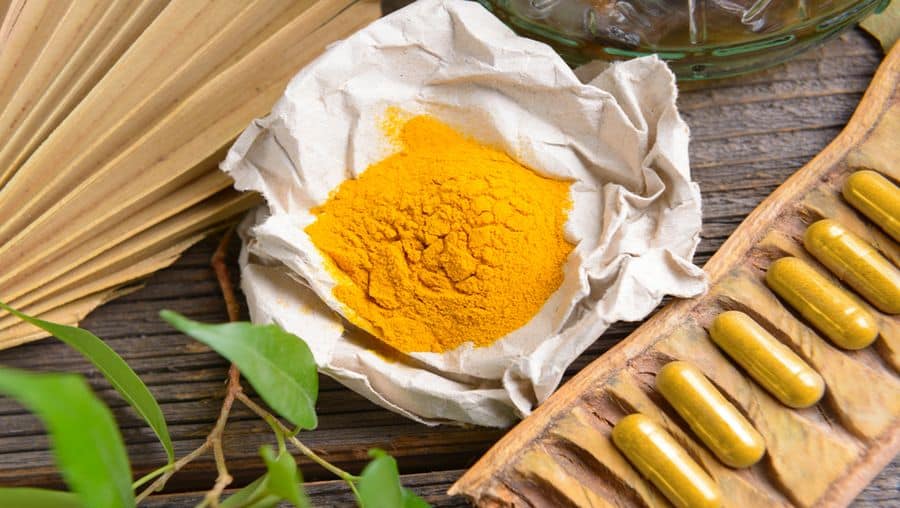The world of herbal supplements has not had an easy time. Government scrutiny, industry politics and increasing consumer mistrust have threatened to greatly reduce the role of herbal supplements—just as the trend of “natural” health starts to get its stride.
The golden child of the often-vilified powered and botanical ingredient space has been curcumin. It’s remarkable how quickly this active of a simple Indian spice (turmeric) commonly used in cooking and Ayurveda (ancient Indian medicine) has grown into mass market status, achieving incredible U.S. adoption and penetration.
T&Cs: Let’s Clear Them Up
In marketing and even industry literature, turmeric and curcumin are often mentioned interchangeably. They are, in fact, not the same thing. Curcumin is derived from the rhizome (an underground root/stem) Curcuma longa (turmeric root), a plant native to the Indian subcontinent and Far East. It is the most active constituent of turmeric.
Curcumonoids have been used in “ancient” Indian medicine for centuries, and have now been validated by mainstream science and academic journals, both for their powerful antioxidant properties, as well as their anti-inflammatory benefits.
Chronic systemic inflammation in the body has been associated with everything from depression and obesity to Alzheimer’s disease. Curcumin is not the only polyphenol (compound found abundantly in natural plant food sources that has antioxidant properties) with meditative effects, but given its anti-inflammatory powers, and the implications across a variety of conditions, it’s in a class of its own.
One challenge curcumin faces is limited bioavailability. Much of what is consumed orally is not absorbed by the body. Traditionally, curcumin has been used as part of ghee (clarified butter) or coconut oil based cooking, often with black pepper (piperine), which has been shown to slow digestion and increase the chance of absorption before being passed out of the body. Additionally, absorption is increased with phospholipids (fat).
The added variable of using a botanical, which by its nature is less predictable, adds to this challenge.
Sales of herbs and supplements were US$7 billion in 2015, up 7.7 percent from the year before; herbs and botanicals accounted for 18 percent of these sales, according to Nutrition Business Journal, and according to Euromonitor, botanicals are projected to have the highest growth rate for food and beverage ingredients from 2013 to 2018.
Drilling down further, sales of curcumin reached $196 million in 2015, up 20 percent from the year before, and the numbers for 2020 are projected to be even greater. In fact, SPINS named turmeric the top-selling ingredient in the herb and homeopathic category.
Growth Drivers
Curcumin is not a lose-weight-overnight or triple-your-energy product. So, what is the basis for such rapid growth? It’s three market forces coming together at once:
1) Modern science has caught up with ancient wisdom. Countless research studies support curcumin’s potential health benefits, pushing the ingredient from the “earthy” natural herb early adopter to the everyday consumer looking for pain relief and preventive health.
2) Increasing interest from mainstream consumers seeking herbal and other “natural” and preventive solutions to their day-to-day challenges, from joint pain to PMS to anxiety, and increasing retail market outlets to facilitate this need. This is quite a switch from the past, when herbal supplements were relegated to “health nut” channels or were targeted to the masses solely for sexual prowess and instant energy.
3) The emerging and interesting bimodal group of consumers seeking herbal supplements include Millennials and seniors. Millennials are not looking to prescriptions and pills like their parents; they are seeking alternative choices for personal and medical care. They are also more adoptive of “exotic” or foreign foods and products. On the other side of the spectrum, the older consumer (60 years and older) is also seeking herbs and medical solutions for joint pain and to stave off cognitive decline.
Challenges and Opportunities
What is next for curcumin? Growth and more growth. Unfortunately, in any industry, money breeds corruption. Synthetic curcumin has made its way into the supplement ecosystem. Synthetic forms of curcumin are made from fossil fuels and have a different chemical profile. Tracing is possible but expensive, and requires cooperation across the supply chain.
As this botanical grows in popularity—and expands outside of the supplement category into other delivery forms—care will need to be taken that its benefits are not overstated or diluted. Much like with probiotics, nutricosmetics and other emerging categories, consumer and regulatory trust will take time to earn, and can quickly be lost with the wrong players at the helm.
Sunita Kumar is a multi-prong entrepreneur and the founder of Nourish Nutrition Inc. (nourishnutrition.com). After spending more than a decade at leading consumer brands and agencies launching products and campaigns for companies such as L’Oreal, American Express, Intuit, Visa, Amazon and Sprout Organic Foods, Kumar now brings her expertise as a scientist and marketer—along with her background in product formulation, supply chain and health-focused retail—to companies looking for guidance on trends, ingredient formulation and optimizing their retail story to drive business growth.
Click here to view original web page at www.naturalproductsinsider.com

